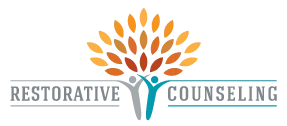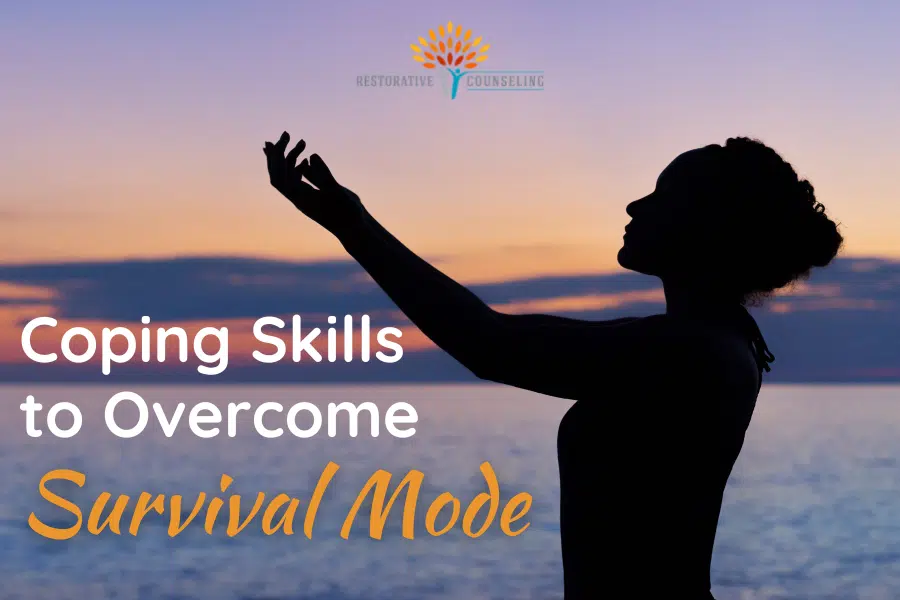Written by Jordan Meehan, LCSW
You have probably felt it before.
That sudden drop in your stomach.
The quickening pace of your heartbeat.
A hitch in your breathing.
This is your body having a “fight-flight-freeze” response to a stressful situation. As humans, we experience these responses in order to help us to navigate and overcome stressful circumstances. For many, these sensations quickly pass once the stress trigger has subsided. However, if a person consistently experiences intense fight-flight-freeze reactions, they may find themselves falling into “survival mode.”
Survival mode can be brought on by traumatic experiences or high levels of constant stress. Some signs of being in survival mode may include constant high anxiety, depression that doesn’t subside, relationship challenges, inability to trust others, difficulty achieving daily life tasks, and angry outbursts.
For those who have experienced trauma, it’s important to understand what are expected reactions following a traumatic event. Thus, you can be aware if your symptoms progress beyond what’s expected and become problematic.
Expected Reactions to Trauma
When a traumatic event occurs, your brain does everything possible to “protect” you from additional pain and harm. Since traumatic events often put your safety at risk, your nervous system must go through a process of re-establishing a sense of safety after the stressor has passed. This may take several days up to several weeks. It is completely expected that you may not feel like yourself following a traumatic experience. During this time, you may feel more on edge, hypervigilant, avoidant, a desire not to be touched, anger, sadness, guilt, and less willing to be around others. These are all typical reactions and are not to be feared. The best approach is to be compassionate of your need to feel what you are feeling and process what happened to you, while prioritizing self-care as much as possible.
However, if any of these symptoms persist for longer than a few weeks, you may start to experience survival mode signs. Working with a trauma clinician can help you heal in both the immediate aftermath of a trauma and if you notice your symptoms getting worse.
Heal from your traumatic experiences.
Bottom-Up Versus Top-Down Coping
Regardless of where you are at in your healing process, learning and utilizing healthy coping mechanisms can be the difference in how you move forward from your trauma. Coping skills are not one-size-fits-all, nor is any one skill a magic bullet for overcoming your trauma. Each person is unique, thus the coping mechanisms that work best for each person will vary.
Generally, coping strategies fall into two categories:
Top-down Coping
Top-down coping strategies utilize logic, problem-solving, and engage the brain in analytical and critical thinking. Some examples include reframing your thoughts, changing the meaning you make out of an experience, and writing down your feelings. These skills are often very effective for individuals who are not actively experiencing intense fight-flight-freeze responses. However, this type of coping has limitations. If you experience an intensely stressful experience, the parts of the brain where logic and reason are processed shut off. This results in top-down coping skills being useless due to the body and brain being in a fight-flight-freeze state.
Bottom-up Coping
This type of coping, sometimes referred to as somatic coping or body-focused coping, focuses on changing how the nervous system responds to stress. Bottom-up coping mechanisms help to calm the nervous system and ultimately retrain your brain to react differently to situations that are viewed as stressful. This type coping tends to be beneficial for people who experience physical signs of distress, particularly those who have experienced trauma.
Which type of coping is better for me?
The short answer: it depends. For the trauma survivor, bottom-up coping is often necessary for recovery, but top-down processes can also be useful. If working with a licensed clinician, they will often teach you both types of coping. Bottom-up coping skills can help get you out of survival mode, while top-down skills can help you change your thoughts and perceptions about your traumatic experiences.
Tips to Overcome Survival Mode
Learning how to cope with trauma, and ultimately escape survival mode, can be challenging. Below are some tips to help you throughout your healing process:
- Use bottom-up coping strategies. Below are a few examples for you to try:
- Deep, diaphragmatic breathing
- Progressive muscle relaxation
- Exercise and rhythmic movement (i.e. running, walking, dancing)
- Trauma-sensitive yoga
- Grounding exercises (i.e. 5-4-3-2-1 sensory activity)
- Practice your coping skills consistently, even when you don’t feel distressed. This will help keep your nervous system in a calm state and help retrain your brain to respond less intensely to stressful situations, thus keeping you out of survival mode.
- Be realistic with your expectations. By using these strategies, you will not experience drastic change overnight, nor will you be able to eliminate your distressing feelings entirely. However, overtime and with consistent use of these skills, distressing feelings and sensations can become less intense.
- Work with a licensed clinician. By working with a clinician, you can learn a variety of coping skills and process your experiences in a safe and effective manner. Healing from trauma does not have to be an isolating experience for you.
The team at Restorative Counseling is here to support you.
Healing from trauma and overcoming survival mode can be hard, but you don’t have to do it alone. When working with our clinicians, you can rest assured knowing that your goals and needs will be respected at every step in your journey. If you would like to learn more about our trauma services, contact us today.

Hi, I’m Jordan!
I partner with teens and adults to treat concerns related to trauma, anxiety, and relationships utilizing CBT, ACT, and EMDR approaches. Read more about me.
Follow Restorative Counseling
Sign up for our newsletter

